
New Mexico photographs

|
New Mexico photographs
A collection of photographs taken during my year in Socorro.(Click on the pictures for a larger copy.) |
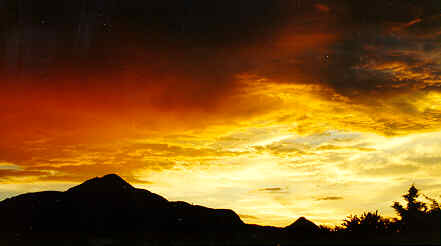 One of my first impressions of New Mexico was that of open space and
sweeping horizons: on a clear day, you can see for ever and ever.
One of my first impressions of New Mexico was that of open space and
sweeping horizons: on a clear day, you can see for ever and ever.
Socorro is at 4600 feet (1400 meters) above sea level, and the air is startlingly clear, so the sunsets are usually rather brief. Every once in a while, though, the whole sky seems to catch fire in a gorgeous display...
And when the stars come out at night, there are so many of them that its often hard to trace out familiar constellations. Out in the desert, a few miles away from city glow, the Milky Way stretches from horizon to horizon: its a breathtaking sight.
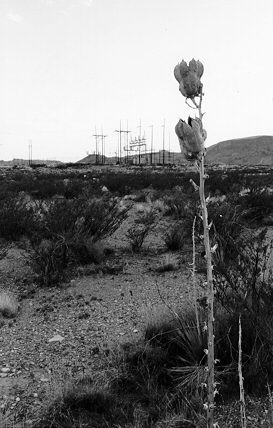
 The desert has its own stark, desolate beauty. The town areas, with
their strips of generic fast food joints and motels, have the
usual degree of tackiness. It's at the edges, where civilization is
eating its way into the desert, that things look really dismal. Scars
carved out by bulldozers and dynamite, power lines marching through
desert scrub: it's an ugly price to pay for progress.
The desert has its own stark, desolate beauty. The town areas, with
their strips of generic fast food joints and motels, have the
usual degree of tackiness. It's at the edges, where civilization is
eating its way into the desert, that things look really dismal. Scars
carved out by bulldozers and dynamite, power lines marching through
desert scrub: it's an ugly price to pay for progress.
Fortunately, there are areas, remote and inaccessible, which look like no human has stepped there in years. And there are forests, quiet trails, even the occasional bubbling brook.
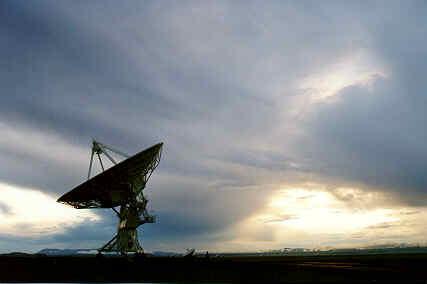 I worked at the National Radio Astronomy
Observatory in Socorro, New Mexico, home to the Very Large
Array. The VLA is set of 27 antennas in the plains of San Augustin,
about an hour's drive west of the town. Not only is it one of the
world's premier radio telescopes, it is also extremely photogenic.
I worked at the National Radio Astronomy
Observatory in Socorro, New Mexico, home to the Very Large
Array. The VLA is set of 27 antennas in the plains of San Augustin,
about an hour's drive west of the town. Not only is it one of the
world's premier radio telescopes, it is also extremely photogenic.
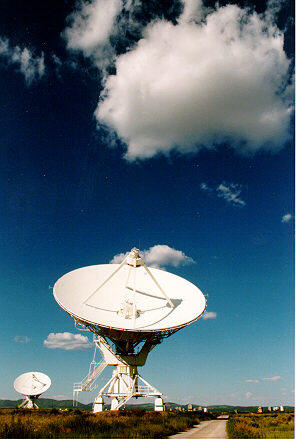 The VLA is a synthesis array. The 27 antennas (each of which is 25
meters across and weighs 230 tons) are arranged in a sprawling Y
pattern upto 36 km (22 miles) across, and the signals received at each
antenna are combined ("correlated") so that the array behaves like a
single telescope of that size.
The VLA is a synthesis array. The 27 antennas (each of which is 25
meters across and weighs 230 tons) are arranged in a sprawling Y
pattern upto 36 km (22 miles) across, and the signals received at each
antenna are combined ("correlated") so that the array behaves like a
single telescope of that size.
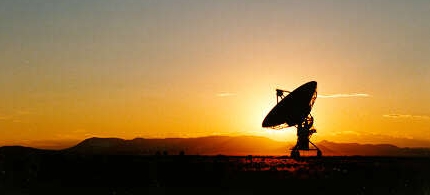 On a good day, the VLA will run almost without human intervention. (On
a bad day, its a whole different story! Some of those electronics date
to the eighties.) But its always fun to go out to the site and wait
for those perfect sunsets.
On a good day, the VLA will run almost without human intervention. (On
a bad day, its a whole different story! Some of those electronics date
to the eighties.) But its always fun to go out to the site and wait
for those perfect sunsets.
These were scanned in and cropped using Corel Photo. No digital magic (except that I converted the desert power grid photo from color into grainy greyscale, but that hardly counts).
|
Shami Chatterjee sc99@cornell.edu Last modified: August 25 1998 |